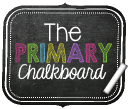Hey everyone! This is Matt from
Digital: Divide & Conquer. Go easy on me, this is my first post over here at the Primary Chalkboard. Just to get acquainted a little better, I'm a K-5 SpEd teacher (we call it a resource room) but I love integrating technology, finding ways to learn/teach alternatively, and focus on project based learning because my students like the real-world.
I'd tell you a bunch of personal stuff about me, but no one really wants to hear about how I've wrestled alligators, raised wolf pups by living in a den with them, and created the pattern phenomenon known as chevron.
So let's cut right to the chase...
Behavior Planning and Data Collection!
Everyone's favorite, I know--but I'm here to share (and tell) you there's a simpler way to get it done. One of the problems I've always had as a SpEd teacher is designing behavior plans for teachers. It sounds funny, but many plans/charts/scoring are unattainable for the classroom teachers because it wasn't created by them, thus creating them ineffective. They (you, classroom teachers) need something fast, effective, and easy to use. It also needs to be effective--wait, I said that.
Last year we really needed a behavior plan/chart that could attain this--AND also allow us to collect that black gold (Texas Tea) know simply as
data.
Here's an example of the chart we used (below).
The classroom teacher created the original behavior idea of the chart/plan and it worked so well we've recreated it on Google Docs. We've since tweaked some of the ideas, added a couple of features, and started using it with many other students. You can grab your own copy of it here:
Behavior Chart Template.
Make sure you download your own copy.
So why did it work?
The most important reason is because it was created by a classroom teacher. I can't stress the importance enough of this--because teachers have to be able to handle behavior plans on their own terms and within the environment of the classroom.
Secondly, it worked because we tracked it all. Using Google Sheets we set up a spreadsheet and input a simple X when the goal was met. At the end of each day the student brought their chart to me and I input the stars/stickers/checks. It took about 20 seconds.
It's kind of like sabermetrics for elementary school. This is really really great data, many times it's circumstantial, until you get something like this.
At the end of the year we added totals, calculated percentages, found on-task percentages, looked at total engagements, and did high-fives. Why? We had successful charted, scored, and tracked a chart/plan across an entire school year with stickers, teachers, and a students that bought it.
Again, I'd encourage you to download a copy yourself, edit it, and see how it work with your students. I don't consider it rocket science, but it was extremely effective. The use of technology played a crucial role because we could share data and information without scheduling a meeting before school.
Some quick tips:
-Don't call it a Behavior Chart. Give it a cool name.
-Make the goal as an I CAN statement. EXAMPLE: I can use kind words. I can finish all my class work. I can keep my hands to myself.
-Create positive incentives! We used each star/sticker as a minute of break time (which usually involved me playing Minecraft on the iPads wit the kids. No joke.
-Don't make this punitive. It doesn't work. Kids like carrot. C'mon, even adults like carrot. We're all working towards something.
That's it! Thanks for reading. I know data collection isn't always the greatest thing, but it can be kind of important.

















































